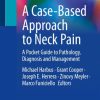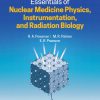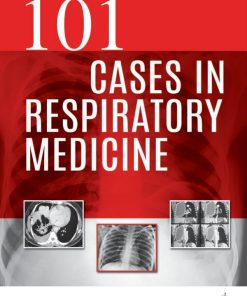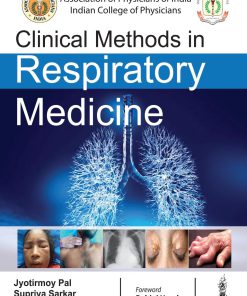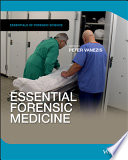Essential Respiratory Medicine 1st Edition by Shanthi Paramothayan ISBN 9781118618349 1118618343
$50.00 Original price was: $50.00.$25.00Current price is: $25.00.
Essential Respiratory Medicine 1st Edition by Shanthi Paramothayan – Ebook PDF Instant Download/Delivery: 9781118618349 ,1118618343
Full download Essential Respiratory Medicine 1st Edition after payment
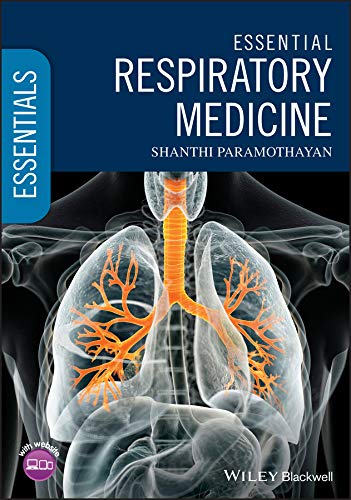
Product details:
ISBN 10: 1118618343
ISBN 13: 9781118618349
Author: Shanthi Paramothayan
A succinct yet comprehensive overview of respiratory medicine, written for students and professionals
Essential Respiratory Medicine is an indispensable text offering an understanding of respiratory conditions and their clinical management within evidence-based guidelines. Containing information on taking a medical history, performing examinations and investigations, diagnosis and the management of respiratory conditions, this comprehensive text was put together by a noted expert in the field.
Written in an accessible manner, Essential Respiratory Medicine contains the foundational science associated with respiratory medicine, a wide-variety of practical procedures, helpful diagrams, and self-assessments designed to enhance understanding of the material presented. The text covers a variety of conditions as well as providing suggestions for engaging with patients at different stages of care. This important resource:
- Demonstrates an effective approach to patients presenting with common respiratory symptoms
- Includes a description of all key practical procedures with diagrams
- Discusses acute management of important respiratory emergencies
- Covers both acute and chronic disease
- Contains a companion website containing a range of learning materials, including downloadable management summaries and algorithms, an image bank, videos of patient examination, example respiratory sounds and multiple-choice questions
Essential Respiratory Medicine is an essential resource for anyone on a clinical placement, rotation, or training programme in respiratory medicine.
Essential Respiratory Medicine 1st Edition Table of contents:
CHAPTER 1: Introduction to respiratory medicine
About the book
CHAPTER 2: Embryology, anatomy, and physiology of the lung
Introduction
Development of the respiratory system
The respiratory tract
Muscles of respiration and mechanical ventilation
Structure of the lungs
Blood supply of the lungs
Nervous supply of the lungs
Lymphatics of the lungs
Control of breathing
Lung receptors and reflexes
Chemoreceptors
Transport of oxygen
Transport of carbon dioxide
The acid‐base balance
Ventilation‐perfusion mismatch
Lung defence
MULTIPLE CHOICE QUESTIONS
FURTHER READING
CHAPTER 3: Pharmacology of the lung
Drugs and the lung
Principles of drug deposition in lungs
Inhaler devices
Oxygen
Inhaled drugs
Drugs prescribed for smoking cessation
Drugs that damage the lungs
MULTIPLE CHOICE QUESTIONS
FURTHER READING
CHAPTER 4: Common respiratory investigations
Laboratory tests
Imaging of the lung
Lung function tests
Exercise testing
Sleep studies
Cardiology investigations
Invasive investigations
Miscellaneous investigations
MULTIPLE CHOICE QUESTIONS
FURTHER READING
CHAPTER 5: Common presentations of respiratory disease
Respiratory history
Breathlessness
Cough
Haemoptysis
Chest pain
Wheeze
Hoarse voice
Snoring
Examination of the respiratory system
Pre‐operative respiratory assessment
Post‐operative respiratory problems
Respiratory assessment of an acutely ill patient
MULTIPLE CHOICE QUESTIONS
FURTHER READING
CHAPTER 6: Obstructive airways disease
Introduction
Asthma
Chronic obstructive pulmonary disease (COPD)
Hyperventilation syndrome (HV)
MULTIPLE CHOICE QUESTIONS
Appendix 6.A Diagnosis of asthma
Appendix 6.B Management of asthma
Appendix 6.C Management of COPD
FURTHER READING
CHAPTER 7: Diffuse parenchymal lung disease
Introduction
Diagnosis of DPLD
Investigations in a patient suspected of a DPLD
Idiopathic interstitial pneumonias (IIP)
Non‐specific interstitial pneumonia (NSIP)
Cryptogenic organising pneumonia (COP)
Desquamative interstitial pneumonia (DIP)
Respiratory bronchiolitis interstitial lung disease (RB‐ILD)
Lymphoid interstitial pneumonia (LIP)
Acute interstitial pneumonia (AIP)
Eosinophilic lung disease
Sarcoidosis
Hypersensitivity pneumonitis (HP)
Lymphangioleiomyomatosis (LAM)
Pulmonary Langerhans cell histiocytosis (PLCH)
Pulmonary alveolar proteinosis (PAP)
Pulmonary amyloidosis
MULTIPLE CHOICE QUESTIONS
Appendix 7.A Drugs that cause peripheral eosinophilia
FURTHER READING
CHAPTER 8: Respiratory infections
Introduction
Respiratory tract infections
Pneumonia
Viral pneumonia
Bacterial pneumonia
Community acquired pneumonia (CAP)
Hospital acquired pneumonia (HAP)
Ventilator‐associated pneumonia
Aspiration pneumonia
Lipoid pneumonia
Pulmonary infections in the immunocompromised
Mycobacterium tuberculosis
Pulmonary complications of mycobacterium tuberculosis
Extra‐pulmonary tuberculosis
Opportunistic (atypical) mycobacterium
MULTIPLE CHOICE QUESTIONS
FURTHER READING
CHAPTER 9: Lung cancer
Introduction
Epidemiology of lung cancer
Aetiology of lung cancer
Pathophysiology of lung cancer
Clinical presentation of lung cancer
Clinical signs of lung cancer
Clinical assessment of patient with suspected lung cancer
Classification of lung cancer
Staging of NSCLC
Staging of SCLC
Management of lung cancer
Surgery
Radiotherapy
Chemotherapy
Targeted molecular therapy
Palliative treatment
Communicating the diagnosis of lung cancer
The lung multidisciplinary meeting
Tracheal and laryngeal tumours
Benign lung masses and solitary pulmonary nodules (SPN)
Common causes of SPN and benign lung mass
Cavitating lung lesions
Carcinoid tumour
Future developments
MULTIPLE CHOICE QUESTIONS
FURTHER READING
CHAPTER 10: Pleural disease
Normal pleura and pleural fluid
Pleural effusion
Pleural infection and empyema
Pneumothorax
Asbestos‐related pleural disease
Mesothelioma
MULTIPLE CHOICE QUESTIONS
Appendix 10.A Analysis of pleural fluid
Appendix 10.B Compensation for asbestos‐related disease
FURTHER READING
CHAPTER 11: Pulmonary embolus, pulmonary hypertension, and vasculitides
Introduction
Pulmonary embolism
Acute pulmonary embolus
Diagnosis of pulmonary embolus
Management of acute pulmonary embolus
Pulmonary hypertension
Classification of pulmonary hypertension
Pulmonary haemorrhagic syndromes
Granulomatosis with polyangiitis (GPA)
Other vasculitides
Anti‐glomerular basement membrane antibody (Goodpasture’s) syndrome
Eosinophilic granulomatosis with polyangiitis (Churg‐Strauss syndrome)
MULTIPLE CHOICE QUESTIONS
FURTHER READING
CHAPTER 12: Suppurative lung disease
Introduction
Bronchiectasis
Cystic fibrosis
Primary ciliary dyskinesia
Lung abscess
MULTIPLE CHOICE QUESTIONS
FURTHER READING
CHAPTER 13: Respiratory failure
Respiratory failure
Mechanisms of respiratory failure
MULTIPLE CHOICE QUESTIONS
Appendix 13.A Calculation of the alveolar‐arterial oxygen gradient
FURTHER READING
CHAPTER 14: Sleep‐related disorders
Introduction
Sleep physiology
Snoring
Upper airways resistance syndrome (UARS)
Obstructive sleep apnoea/hypopnoea syndrome (OSAHS)
Diagnosis of OSA
Intra‐oral devices
Narcolepsy
Periodic limb movement disorder (PLMD)
Restless leg syndrome (RLS)
REM behaviour disorder (RBD)/parasomnia
Idiopathic hypersomnia (IH)
Insomnia
Chronic sleep insufficiency
Central sleep apnoea (CSA)
Nocturnal hypoventilation
MULTIPLE CHOICE QUESTIONS
Appendix 14.A Epworth Sleepiness Scale (ESS)
FURTHER READING
CHAPTER 15: Occupational, environmental, and recreational lung disease
Occupational, environmental, and recreational lung diseases
Occupational lung disease
Pneumoconiosis
Hypersensitivity pneumonitis
Recreational drugs and the lungs
The environment and the lungs
MULTIPLE CHOICE QUESTIONS
FURTHER READING
CHAPTER 16: Disorders of the mediastinum
Anatomy of the mediastinum
Diagnosis of a mediastinal mass
Anterior mediastinal mass
Middle mediastinal mass
Posterior mediastinal mass
Other mediastinal conditions
MULTIPLE CHOICE QUESTIONS
FURTHER READING
CHAPTER 17: Acute lung injury and acute respiratory distress syndrome
Acute lung injury (ALI) and acute respiratory distress syndrome (ARDS)
Diagnosis of ALI and ARDS
Incidence and mortality of ALI and ARDS
Pathogenesis of ALI and ARDS
Investigations in patients suspected of ALI and ARDS
Management of ALI and ARDS
Principles of mechanical ventilation in ARDS
Other therapies for ARDS
Morbidity and mortality in ARDS
Transfusion‐Related Acute Lung Injury (TRALI)
Acute chest syndrome with sickle cell disease
Smoke inhalation
Carbon monoxide poisoning
Airway trauma
Near‐drowning
Deep sea diving
Acute altitude sickness
MULTIPLE CHOICE QUESTIONS
FURTHER READING
Index
People also search for Essential Respiratory Medicine 1st Edition:
essential oils for respiratory health
what is good for respiratory
essential oil respiratory
essential oil for respiratory relief
essential oil for respiratory system
Tags: Shanthi Paramothayan, Essential Respiratory Medicine
You may also like…
Medicine - Others
Medicine - Internal Medicine
Clinical Methods in Respiratory Medicine 1st Edition Jyotirmoy Pal Supriya Sarkar Sekhar Chakraborty
Science (General)
Fortschritte der Physik Progress of Physics Band 29 Heft by De Gruyter 49783112655900 3112655907
Medicine - Others
Essential Forensic Medicine 1st Edition by Peter Vanezis 1119186897 ISBN 9781119186892 1119186897
Medicine - Chinese Medicine
Essential Chinese Medicine In 4 Volumes English and Chinese Edition Bao Chun Zhang Yu Ting Chen

